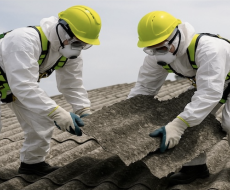
January 29, 2019
What are the effects of an earthquake? Are they the same everywhere?
Are the effects of an earthquake the same everywhere?
Earthquakes pose a real risk in Italy. Deemed a seismic country, Italy has experienced around 3,000 earthquakes over the last thousand years, 300 of which had a magnitude greater than 5.5.

Earthquakes originate, above all, where the earth’s crust is more fragile. So it is important to identify each zone based on its past and its characteristics.
Since an earthquake is not normally an isolated phenomenon — with a strong earthquake usually forming part of a longer sequence that can stretch over days and be complex — in order to determine the seismicity of each region, it proves essential to study what events it has already experienced, examine instrument recordings, damage to buildings, and traces left behind in the environment.
Studies have revealed that, for the same distance from the epicentre, the intensity with which an earthquake is felt depends on the type of ground and the shape of the land: the shaking is generally stronger where the ground is soft and weaker in hard ground, such as rock.
The factor that results in shockwaves being amplified is where we have soft ground in contact with hard ground.
Based on the known characteristics of Italy’s ground, the whole country has been divided up and classified into four seismic zones, which entail the application of incremental levels of protection for buildings:
Zone 1 is the most hazardous zone, where earthquakes have occurred in the past that have led to very serious damage.
Districts falling into zone 2 have experienced significant damage in the past caused by fairly strong earthquakes.
Zone 3 districts have experienced little damage in the past, but feature ground where modest shaking is a possibility.
While zone 4 is the least hazardous. The likelihood of damage is low.
So knowing the characteristics of the ground you are on proves key in assessing its safety and reliability if you intend to build there.
In order to understand what seismic response a location may give, engineers and architects must have access to accurate data on the ground (seismic microzoning): they will then use these data to determine where it is best to create new buildings for residential or work use.
When it comes to earthquakes, prevention cannot mean eliminating the seismic risk altogether, instead it means reducing the likelihood of hazardous consequences for people and property. While the seismic hazard rating cannot be changed, prevention can be achieved by addressing the other risk components: susceptibility to damage (vulnerability) and the value of what is exposed to possible damage (exposure).






